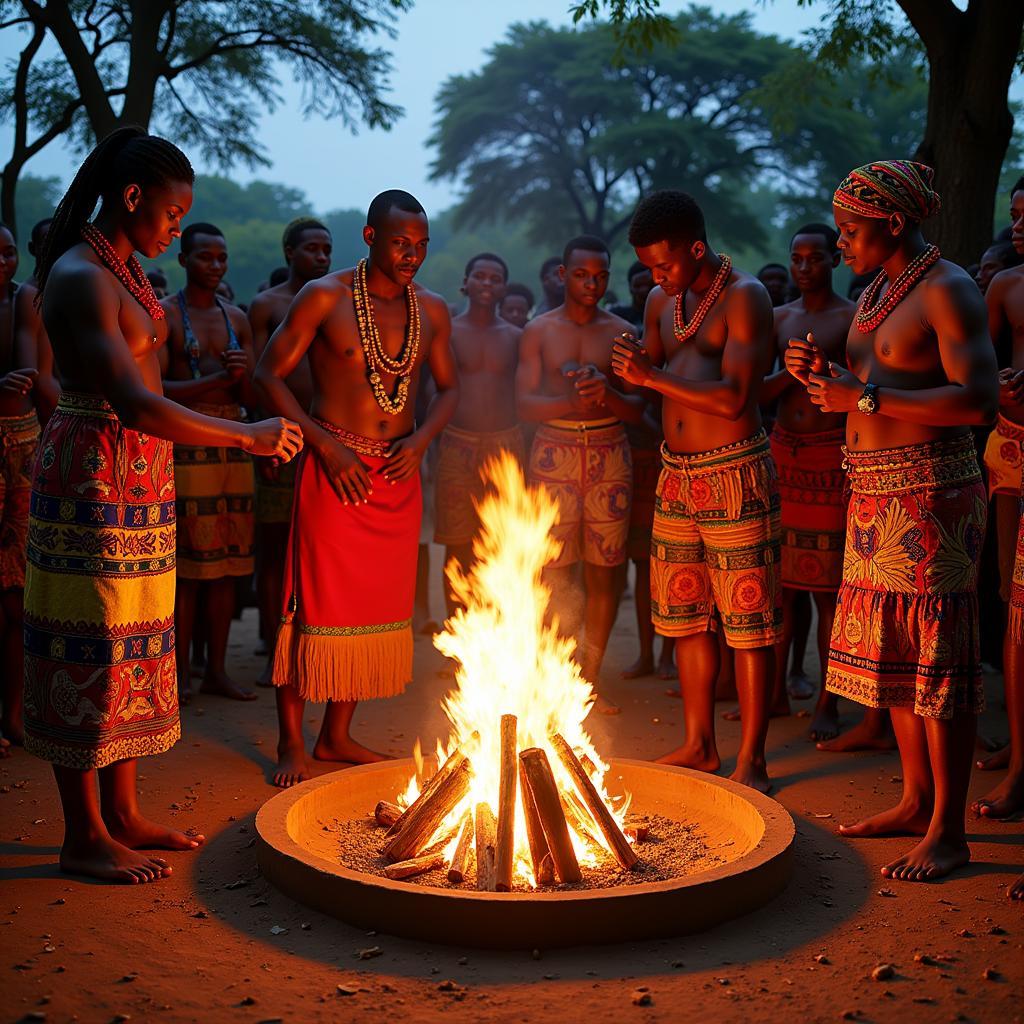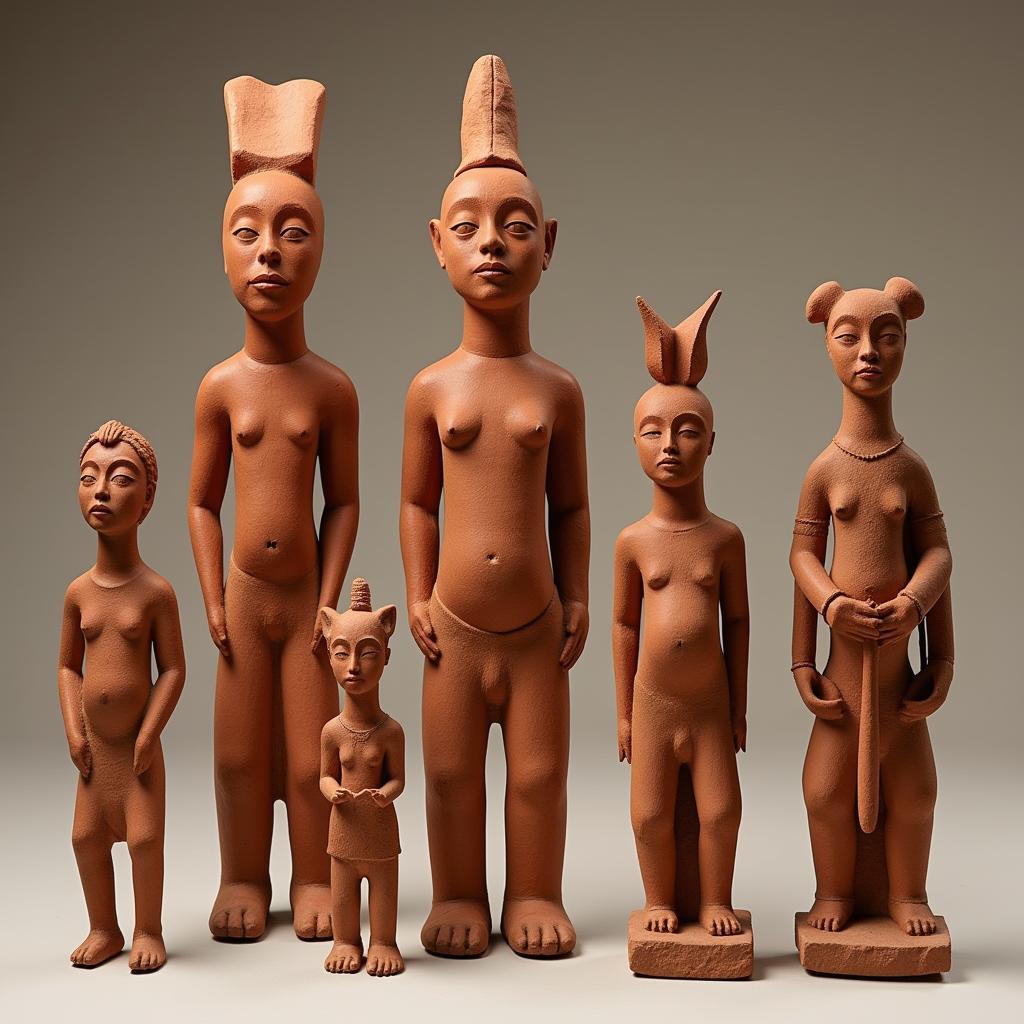African Elephant Pictures and Facts: A Majestic Giant
African Elephant Pictures And Facts reveal a creature of immense power and surprising intelligence. These gentle giants roam the savannas and forests of Africa, captivating us with their size and intricate social lives. From their powerful tusks to their complex communication, African elephants are truly iconic animals. Let’s delve deeper into the world of these magnificent beings.
Unveiling the Secrets of African Elephants
African elephants are the largest land mammals on Earth. Their sheer size is awe-inspiring, with males reaching up to 13 feet tall and weighing over 6 tons. But beyond their impressive physique, African elephants possess a rich social structure and intelligence that rivals that of primates. They communicate through a variety of vocalizations, including rumbles, trumpets, and roars. These sounds can travel for miles, allowing elephants to maintain contact over long distances. Their large ears also play a vital role in communication, acting as amplifiers and radiators.
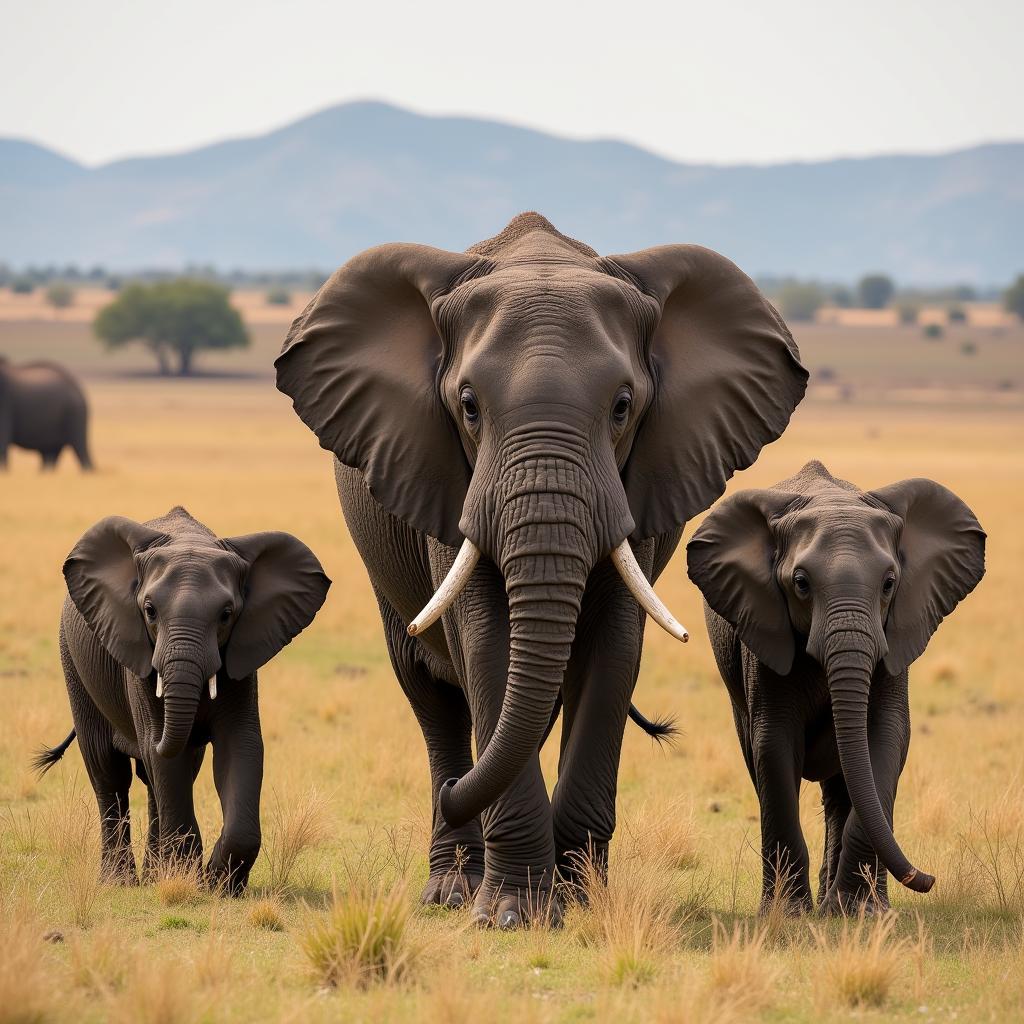 African Elephant Family Unit
African Elephant Family Unit
Elephants are herbivores, consuming vast amounts of vegetation daily. Their diet consists of grasses, leaves, bark, and fruits. They play a vital role in their ecosystems, shaping the landscape and creating habitats for other animals. For instance, their feeding habits can help to clear dense vegetation, promoting the growth of new plants and providing grazing areas for other herbivores.
The Importance of African Elephant Conservation
Sadly, African elephants face numerous threats, including habitat loss, poaching, and human-wildlife conflict. The demand for ivory, particularly in Asian markets, has fueled a devastating poaching crisis, decimating elephant populations across Africa. Conservation efforts are crucial to ensuring the survival of these magnificent creatures. Protecting their habitat, combating poaching, and promoting sustainable coexistence between humans and elephants are essential for their future.
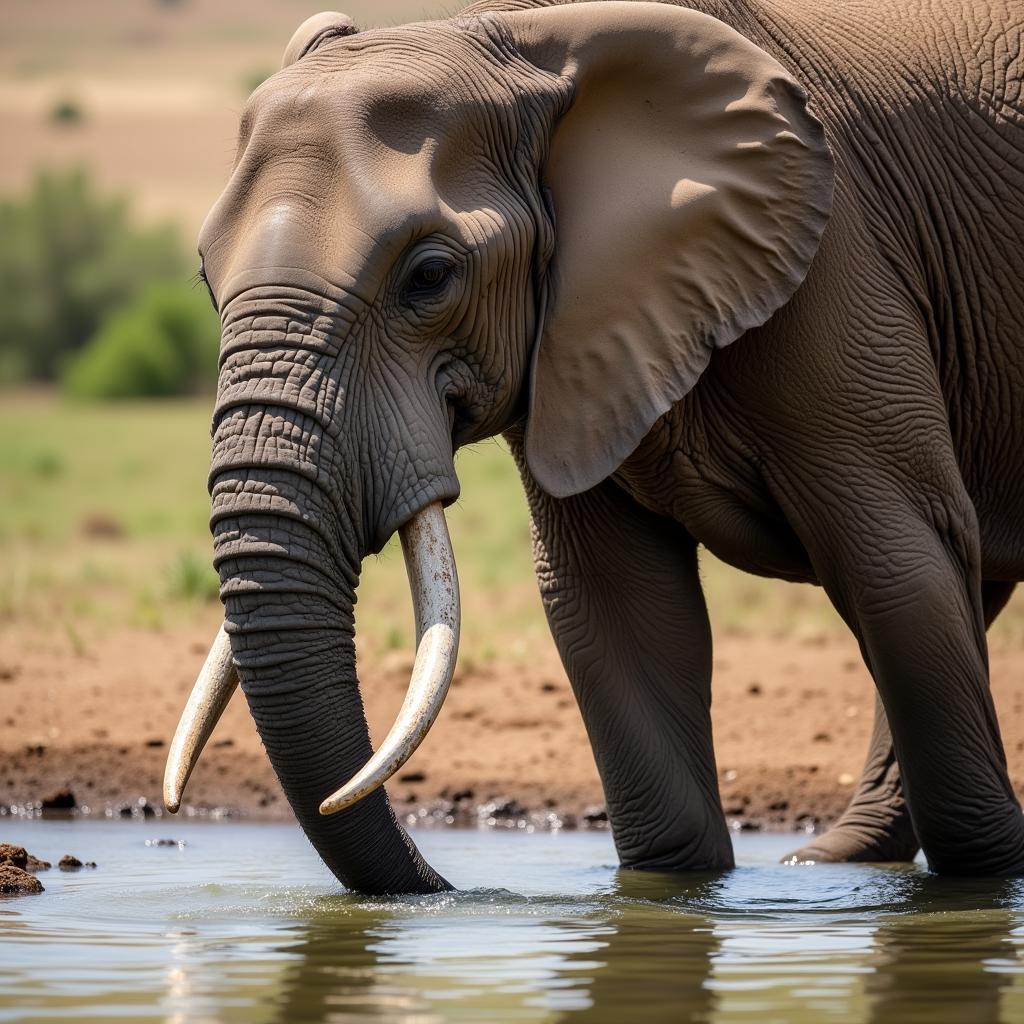 African Elephant Drinking Water
African Elephant Drinking Water
Organizations like the World Wildlife Fund (WWF) are working tirelessly to protect African elephants and their habitats. They are implementing anti-poaching patrols, supporting community-based conservation initiatives, and working to reduce the demand for ivory. You can learn more about their efforts and how you can support them through their website. african elephant endangered species act. These magnificent animals need our help.
African Elephant Behaviour and Communication
African elephants live in complex social structures, led by a matriarch, usually the oldest and most experienced female. The matriarch guides the herd in search of food and water and protects the younger members from predators. This intricate social structure is essential to their survival.
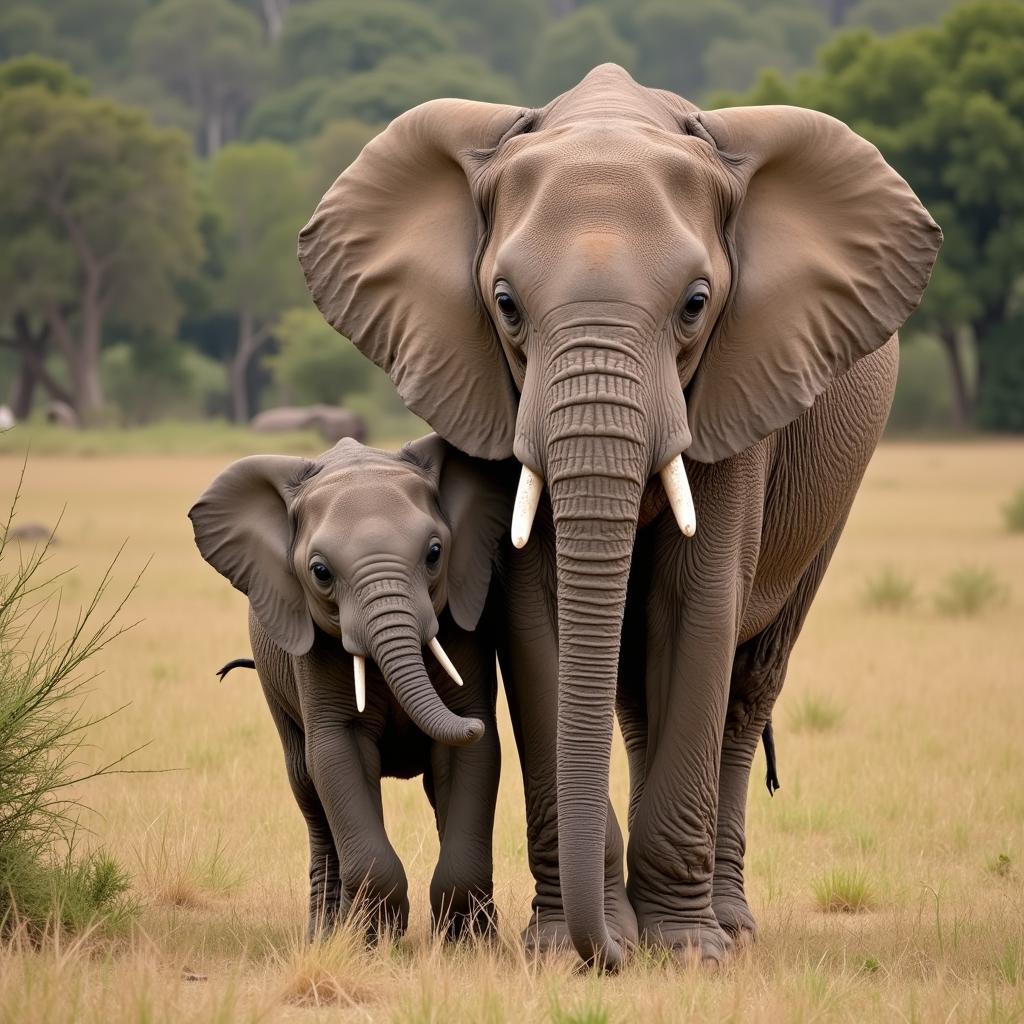 African Elephant Calf with Mother
African Elephant Calf with Mother
What do African elephants sound like? Their communication is fascinating, involving a range of vocalizations and intricate body language. They can even communicate through infrasound, which travels through the ground and can be felt by other elephants over long distances.
Dr. Joyce Poole, a renowned elephant researcher, states, “Elephants possess a level of emotional intelligence that is truly remarkable. Their capacity for empathy, grief, and joy is a testament to their complex social lives.”
Another expert, Dr. Iain Douglas-Hamilton, founder of Save the Elephants, adds, “Protecting elephants is not just about saving a species; it’s about preserving the integrity of entire ecosystems.” These experts highlight the importance of understanding and protecting these intelligent and vital creatures. african animals colouring.
Conclusion: Preserving the Legacy of African Elephants
African elephant pictures and facts offer a glimpse into the lives of these incredible animals. Their size, intelligence, and social complexity are just a few of the things that make them so fascinating. It is our responsibility to protect these gentle giants and ensure their survival for future generations. Learn more about African animal art. african animal art ks1. Download more African elephant pictures here: african elephant pictures download. Let’s work together to preserve the legacy of these magnificent creatures. Learn more about the sounds they make. african buffalo roar sound.
FAQ:
- What is the lifespan of an African elephant? African elephants typically live for 50-70 years in the wild.
- How much do African elephants eat? They can consume up to 300 pounds of vegetation per day.
- What are the main threats to African elephants? Poaching for ivory, habitat loss, and human-wildlife conflict are the primary threats.
- How do African elephants communicate? They use a combination of vocalizations, infrasound, and body language to communicate.
- What is the social structure of African elephants? They live in matriarchal herds led by the oldest and most experienced female.
- How can I help protect African elephants? Supporting conservation organizations, spreading awareness, and advocating for stronger anti-poaching measures are all ways to help.
- Where can I see African elephants in the wild? Several national parks and reserves across Africa offer opportunities to observe elephants in their natural habitat.
For further assistance, please contact us at Phone Number: +255768904061, Email: kaka.mag@gmail.com or visit us at: Mbarali DC Mawindi, Kangaga, Tanzania. We have a 24/7 customer support team.
